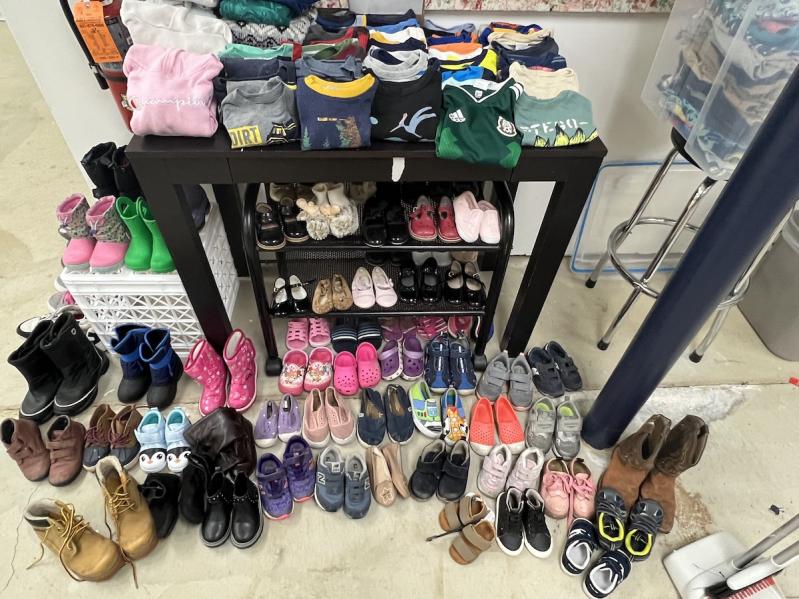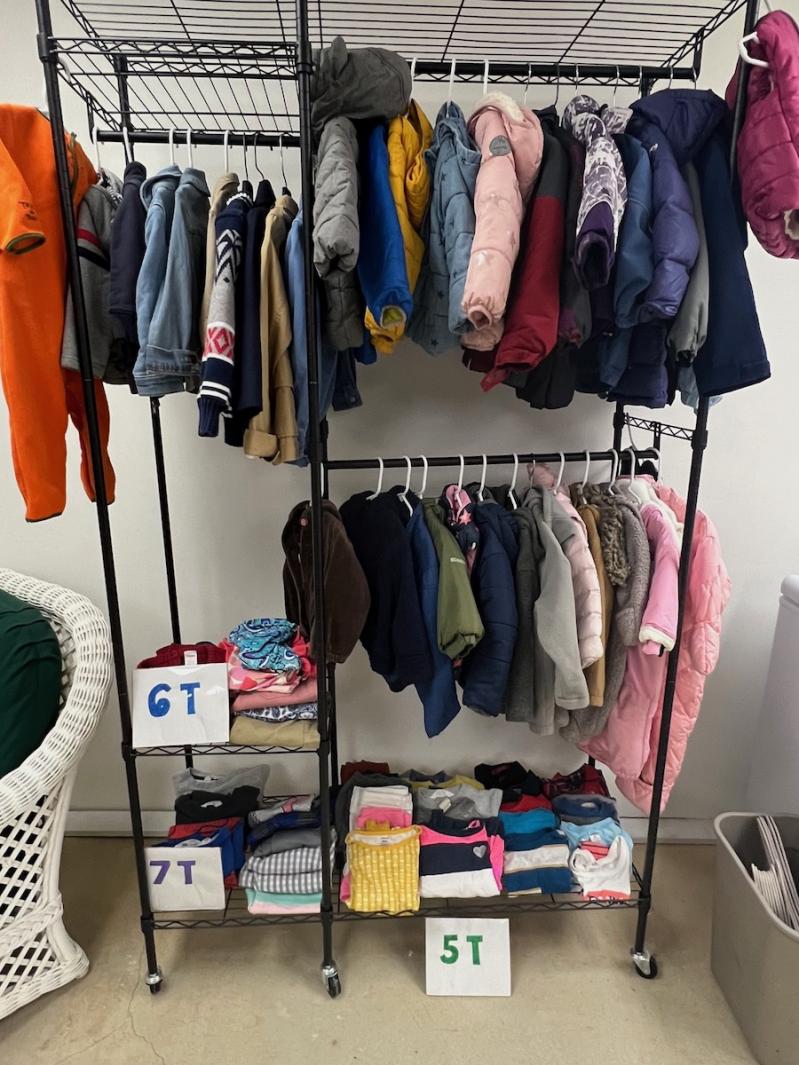It’s part community service, part environmental initiative: A two-month-old children’s clothing swap effort at the Eleanor Whitmore Early Childhood Center will be available to the public starting tomorrow.
Anyone in need of clothes for their kids, sizes 2T to 7, can stop by the center on Friday afternoons or by appointment to choose from the overflowing racks and tables of shirts, sweaters, pants, jackets, hats, and mittens, or to donate gently used clothes of their own.
“The clothing is adorable, it’s in great condition, and it’s looking for homes,” said Joan Overlock, director of development at the child care and preschool center, which has been a hub of support for working families here for more than five decades. “It’s clean, and a lot of things we get still have tags on them.”
The benefit for working families is an obvious one: Kids outgrow clothes and shoes sometimes faster than their parents can provide new ones, depending on a family’s financial situation, so constantly buying new ones can be a burden.
But the environmental benefit may be less obvious. In January, The New York Times reported that children’s clothing and shoes were part of a growing “fast fashion” crisis — referring to the trend of clothing winding up in landfills. The Times cited Environmental Protection Agency data that showed the people in the United States discarded nearly 13 million tons of clothing and shoes in 2018, of which only about 13 percent was recycled.
“Kids’ wear raises quite a unique, yet alarming, design challenge because that status quo of the linear take-make-waste model is amplified. As kids grow out of their clothes, parents ultimately, in many cases, dispose of them,” Sandra Capponi, founder of a website called Good on You, which rates apparel companies based on their environmental impact, told The Times. “So the kids’ clothes life cycle is much shorter compared to adult garments.”
Jeanette Traslavina, whose daughter attends the Eleanor Whitmore Center, has coordinated a team of eight parent volunteers who sort through and inspect donations, organize them, and staff the “closet” on Fridays from 2 to 5 p.m.
“We make sure there’s no stains, no holes” in the clothing, and that “they’re not really worn out to the fact that they’ll have a second life with another child,” she said. “Whatever we’re going to put out is something we would feel comfortable putting on our own children.”
When Ms. Overlock sent an email last fall seeking parent volunteers for the initiative, “it really struck a nerve for me because it was something I had wanted to do, too,” said Ms. Traslavina, who grew up in East Hampton and works for a Sag Harbor nonprofit. “I’ve always purchased secondhand for my daughter. It feels like a more environmentally friendly way to reuse clothes that are often new or in like-new condition because kids grow so fast and clothing can be so expensive.”
And finding used children’s clothing at a thrift store means leaving town to do so: A few years ago the popular Bargain Box thrift store run by the Ladies Village Improvement Society stopped selling kids clothes.
In addition to toddlers’ and kids’ clothes, the Eleanor Whitmore Center also has maternity clothes on offer, plus books and toys that children can browse through while their parents are picking out clothes. There’s also a limited quantity of equipment such as infant bedding, strollers, and high chairs.
Those who shop are not obligated to make a donation in return.
As the program gains momentum, Ms. Traslavina said it may expand up to include sizes for older children.
“We’re hoping this has a larger, positive impact on the community,” she said.
Ms. Overlock said she recently watched a few little girls pick out sparkly dresses. “It’s very sweet,” she said, “and it’s such a service to anybody who’s got a young one.”
The center cares for 100 children between the ages of 18 months and 5 years old.
“You’re out on winter break, you come back a week later, and the kids are taller,” Ms. Overlock said. “You see their weekly growth in mind and body.”


